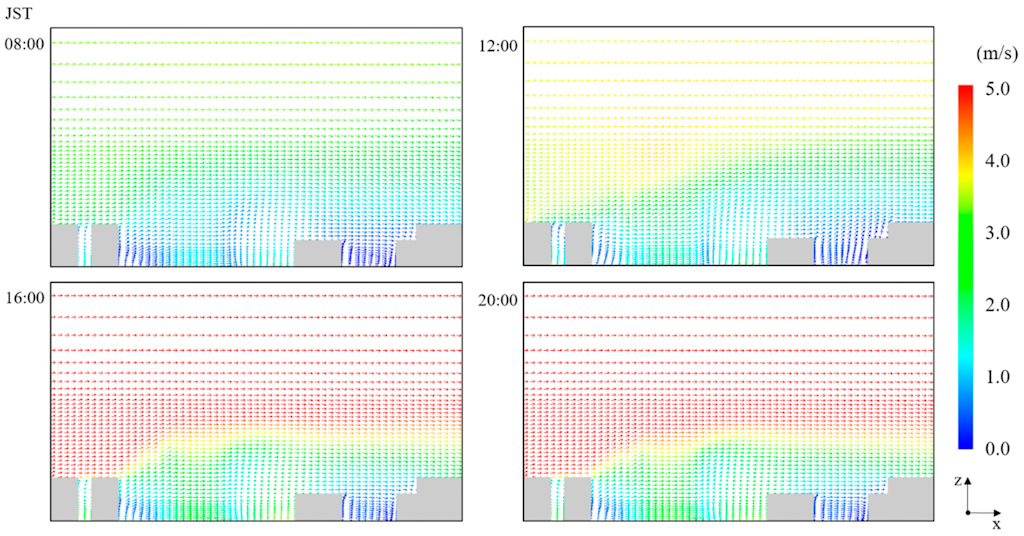By: Gonzalez Olivardia, F.G.; Zhang, Q.; Matsuo, T.; Shimadera, H.; Kondo, A.
Abstract
Studies in actual urban settings that integrate chemical reaction modeling, radiation, and particular emissions are mandatory to evaluate the effects of traffic-related air pollution on street canyons. In this paper, airflow patterns and reactive pollutant behavior for over 24 h, in a realistic urban canyon in Osaka City, Japan, was conducted using a computational fluid dynamics (CFD) model coupled with a chemical reaction model (CBM-IV). The boundary conditions for the CFD model were obtained from mesoscale meteorological and air quality models. Inherent street canyon processes, such as ground and wall radiation, were evaluated using a surface energy budget model of the ground and a building envelope model, respectively. The CFD-coupled chemical reaction model surpassed the mesoscale models in describing the NO, NO2, and O3 transport process, representing pollutants concentrations more accurately within the street canyon since the latter cannot capture the local phenomena because of coarse grid resolution. This work showed that the concentration of pollutants in the urban canyon is heavily reliant on roadside emissions and airflow patterns, which, in turn, is strongly affected by the heterogeneity of the urban layout. The CFD-coupled chemical reaction model characterized better the complex three-dimensional site and hour-dependent dispersion of contaminants within an urban canyon.
Atmosphere 2019, 10 (9)

